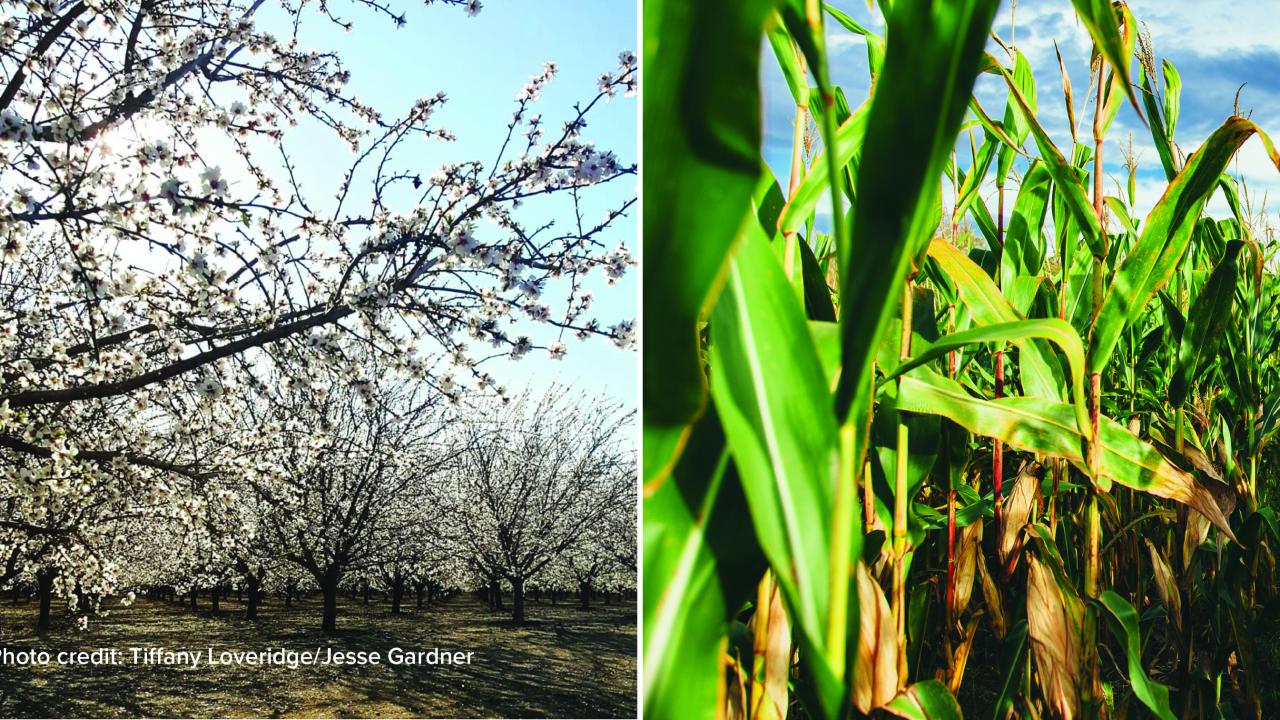
Fertilizer Prices Keep Rising and the Russia-Ukraine Conflict Could Make it Worse
We’ve heard a lot about rising fertilizer prices since mid-2020 and various explanations have been offered. UC Davis DeLoach Professor of Agricultural Economics, Aaron Smith, says a confluence of factors have combined to cause the price spike and that, in part due to the Russia-Ukraine conflict, prices continue to increase. "Oil and gas prices have surged in the past couple of weeks due to supply uncertainty created by Russian threats to invade Ukraine,” said Smith. “These events have pushed fertilizer prices up even more, strengthening the economic incentive for American farmers to cut back on fertilizer use this year."
The Green Revolution of the 60s and 70s that led to a boom in agricultural productivity was fueled not only by improved plant varieties but by an increased use of chemical fertilizers such as urea (nitrogen), phosphate products (phosphorus), and potash (potassium). Nitrogen use—which accounts for 60% of all fertilizer use— actually increased by a factor of four during this time, with a much slower but steady rise in use after the early 80s until a peak during the 2008 commodity boom. However, fertilizer prices, which had been relatively stable since 2015, began to rise in 2020 and almost doubled between the summer of 2020 and the end of 2021.
In the U.S., manufacturers use natural gas to turn nitrogen into ammonia, a more accessible form of nitrogen for most crops. In fact, natural gas accounts for 80% of the cost of producing ammonia fertilizer. Thus, when natural gas prices doubled between the summer of 2020 and the end of 2021, the increased cost of nitrogen production was reflected in the price of urea fertilizer.
Energy costs are important to a lesser extent for the mining of phosphate and potash. But as many crops apply a mix of the three macronutrients, rising energy prices have and will likely continue to play a significant role in the overall rise in fertilizer pricing. Severe storms, such as Hurricane Ida in August 2021 and the Texas freeze in February 2021 further disrupted nitrogen supply. Further, COVID-19 supply chains disruptions in late 2021, combined with the rising costs of shipping since 2020, also contributed to the perfect storm of events that caused the current skyrocketing prices.
Demand-side pressure has also contributed to the rising fertilizer prices. Corn takes up about a quarter of all cropland but uses about 40% of each type of fertilizer. In 2020, fertilizer costs made up around 35% of the operating budget for corn farmers and around 25% of the operating budget for other major U.S. grain crops such barley, oats, sorghum, and wheat. So, when corn, soybean, and wheat commodity prices increased between the summer of 2020 and the end of 2021, there was incentive for these farmers plant more of these crops, thereby increasing fertilizer use.
Currently, fertilizer prices—particularly amidst uncertainty over the Russia-Ukraine conflict—are rising more than most crop prices. This may lead to less fertilizer applied per acre in upcoming seasons; this decrease in fertilizer use could provide an environmental benefit in the form of decreased fertilizer runoff and leaching.
To learn more about the rise in U.S. fertilizer prices, read the full article by Aaron Smith (associate professor in the Department of Agricultural and Resource Economics at UC Davis: “The Story of Rising Fertilizer Prices,” ARE Update25(3): 1–4. UC Giannini Foundation of Agricultural Economics, online at https://giannini.ucop.edu/filer/file/1645718420/20317/ .
ARE Update is a bimonthly magazine published by the Giannini Foundation of Agricultural Economics to educate policymakers and agribusiness professionals about new research or analysis of important topics in agricultural and resource economics. Articles are written by Giannini Foundation members, including University of California faculty and Cooperative Extension specialists in agricultural and resource economics, and university graduate students. Learn more about the Giannini Foundation and its publications at https://giannini.ucop.edu/.
Media Resources
Ria DeBiase, Communications Director, Giannini Foundation of Agricultural Economics, (530) 752-3508, rwdebiase@ucdavis.edu.
Aaron Smith, Professor, Department of Agriculture and Resource Economics, UC Davis, adsmith@ucdavis.edu.
Ellen M. Bruno, Assistant Cooperative Extension Specialist, Department of Agricultural and Resource Economics, UC Berkeley and Co-editor, ARE Update, Giannini Foundation of Agricultural Economics, ebruno@berkeley.edu.